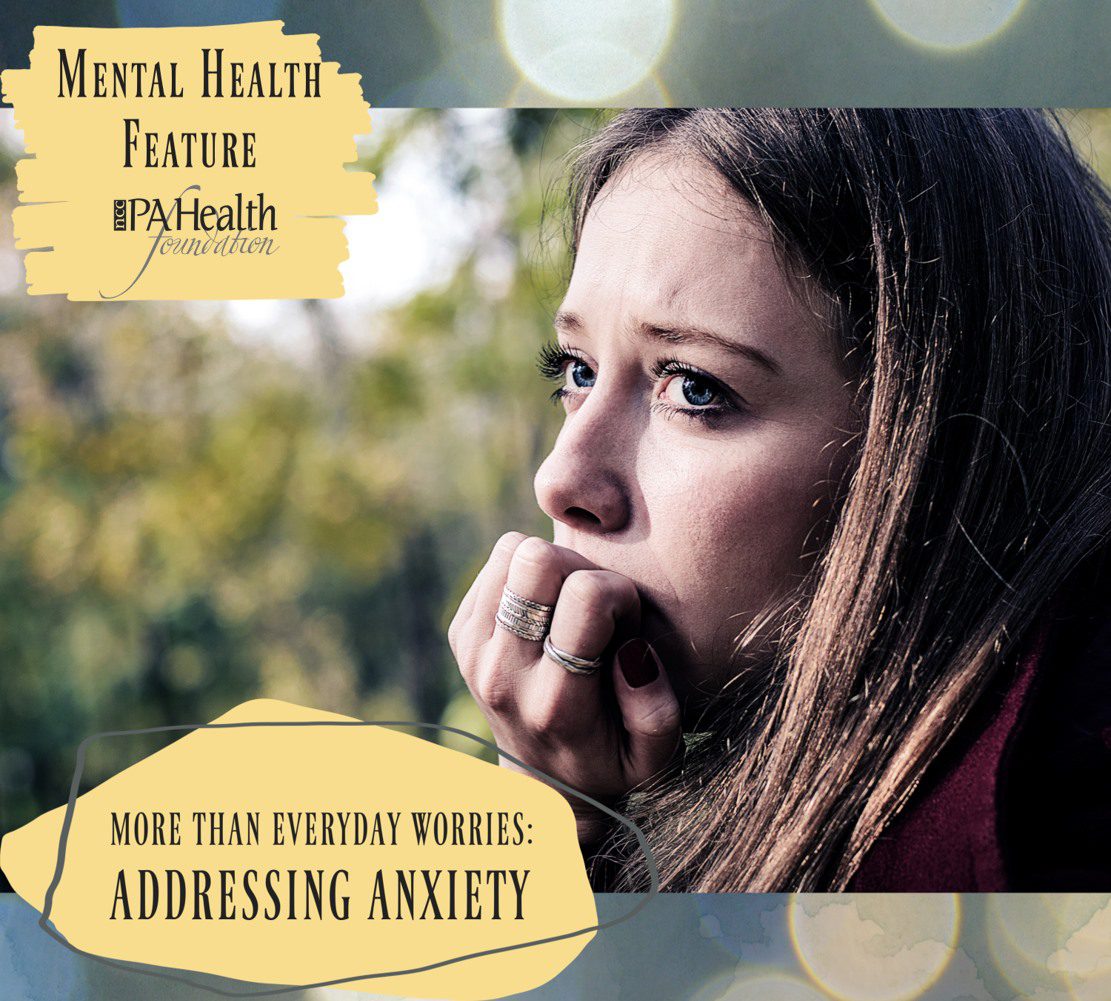More than Everyday Worries: Addressing Anxiety
Anxiety disorders are the most common and pervasive mental health disorders in the US and worldwide; many people deal with an anxiety disorder daily. While there are several types of anxiety, one thing remains constant: Occasional anxiety is an expected part of life. You might feel anxious when faced with a problem at work, before taking a test, or before making an important decision. When anxiety involves more than just temporary worry or fear, PAs and providers need to recognize the signs.
Here are just a few statistics to consider:
- Nearly 40 million people in the US (18%) experience an anxiety disorder in any given year.
- Approximately 8% of children and teenagers experience an anxiety disorder with most people developing symptoms before age 21.
- Only about one-third of those suffering from an anxiety disorder receive treatment, even though the disorders are highly treatable.
- The World Health Organization (WHO) reports 1 in 13 globally suffers from anxiety, with specific phobia, major depressive disorder, and social phobia being the most common.
While there is no one thing that will cause anxiety for everyone, some things can increase risk for having an anxiety disorder, including genetics, brain chemistry, a person’s personality, and life events. It is estimated that about 30% of the people that have anxiety will go through their life being untreated. So, as providers, how can we recognize and treat anxiety?
Screening tools can be helpful. SMIAdviser offers an app for your phone that includes the Generalized Anxiety Disorder-7 (GAD-7) screening tool, so you can access it easily while talking to your patients about symptoms of anxiety. Another helpful tool may be the Hamilton Anxiety Rating Scale (HARS), which helps to assess the severity of anxiety symptoms.
While treatment plans should consider several factors, providers may consider medication and psychotherapy. SSRI’s and SNRI’s are often the first line of treatment. It is also possible to use benzodiazepines, but those are not recommended for routine treatment of anxiety. Further, it is possible to use beta blockers, tricyclic antidepressants, buspirone, or other medications like clonidine or hydroxyzine, although those are not as recommended as some of the other options. In addition, psychotherapy, specifically Cognitive Behavioral Therapy and Dialectical Behavioral Therapy, has been shown to be an effective treatment for anxiety, both independently of and in conjunction with medication.
Untreated anxiety has been implicated in several chronic physical illnesses, including heart disease, chronic respiratory disorders, and gastrointestinal conditions, which underscores the need for all PAs and providers to be equipped to recognize and treat anxiety. Anxiety can also result in someone not being able to go to school, or to work, or to even be able to go to the store; and sometimes anxiety doesn’t present as obviously as other mental health disorders. As providers, we should be frequently asking questions about anxiety, recognize signs and symptoms, and initiate treatment.

Resources:
- SMIAdviser: https://smiadviser.org/
- Hamilton Anxiety Rating Scale: https://dcf.psychiatry.ufl.edu/files/2011/05/HAMILTON-ANXIETY.pdf
- Crisis Text Line: https://www.crisistextline.org/get-help/anxiety
References:
- National Institute of Mental Health, Anxiety Disorders: https://www.nimh.nih.gov/health/topics/anxiety-disorders/index.shtml
- Anxiety & Depression Association of America, What is Anxiety and Depression? https://adaa.org/understanding-anxiety
- National Library of Medicine, Treatment of anxiety disorders: https://www.ncbi.nlm.nih.gov/pmc/articles/PMC5573566/
- Harvard Health Publishing, Pain, anxiety, and depression: https://www.health.harvard.edu/mind-and-mood/pain-anxiety-and-depression

